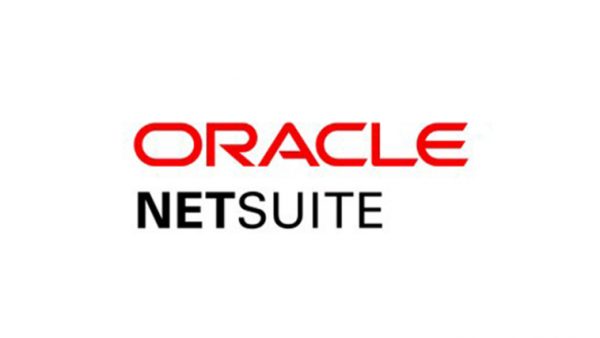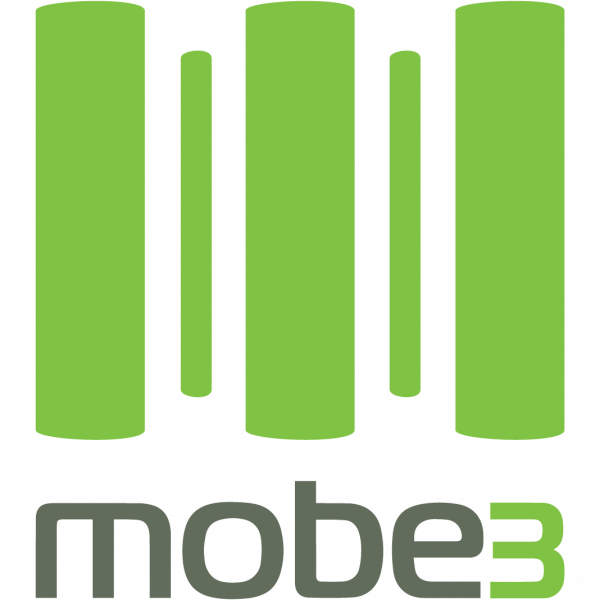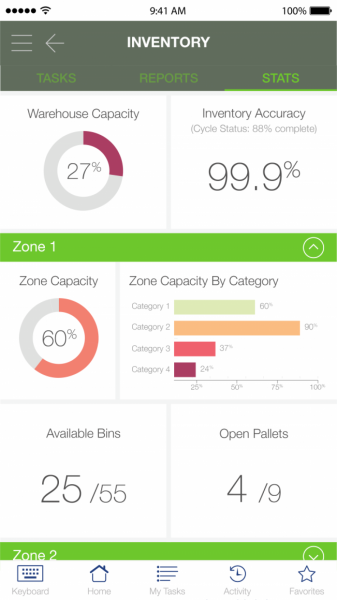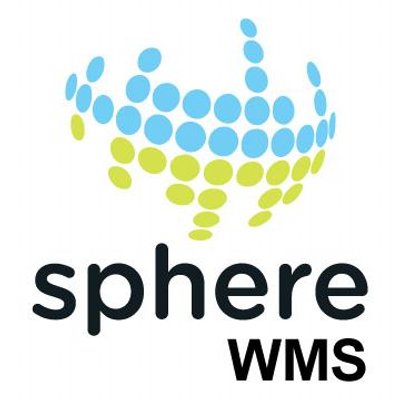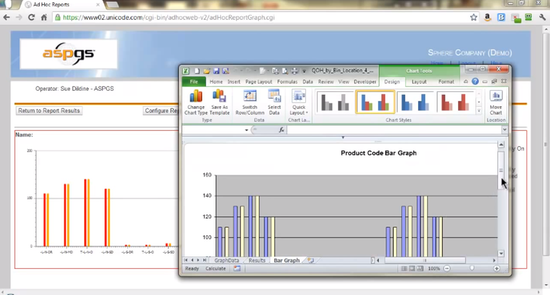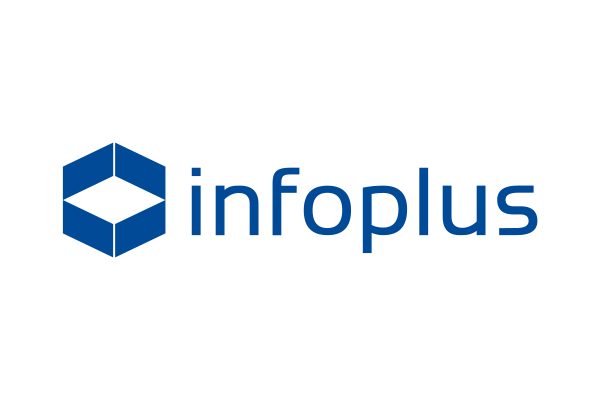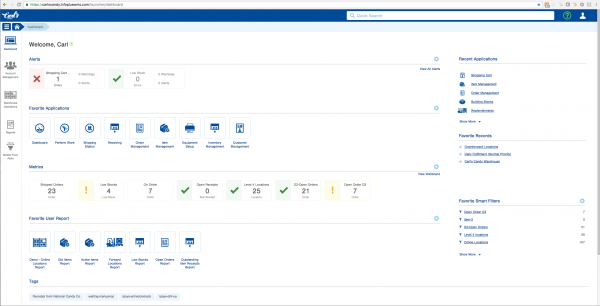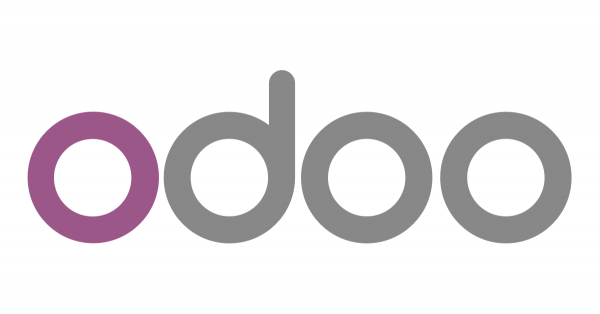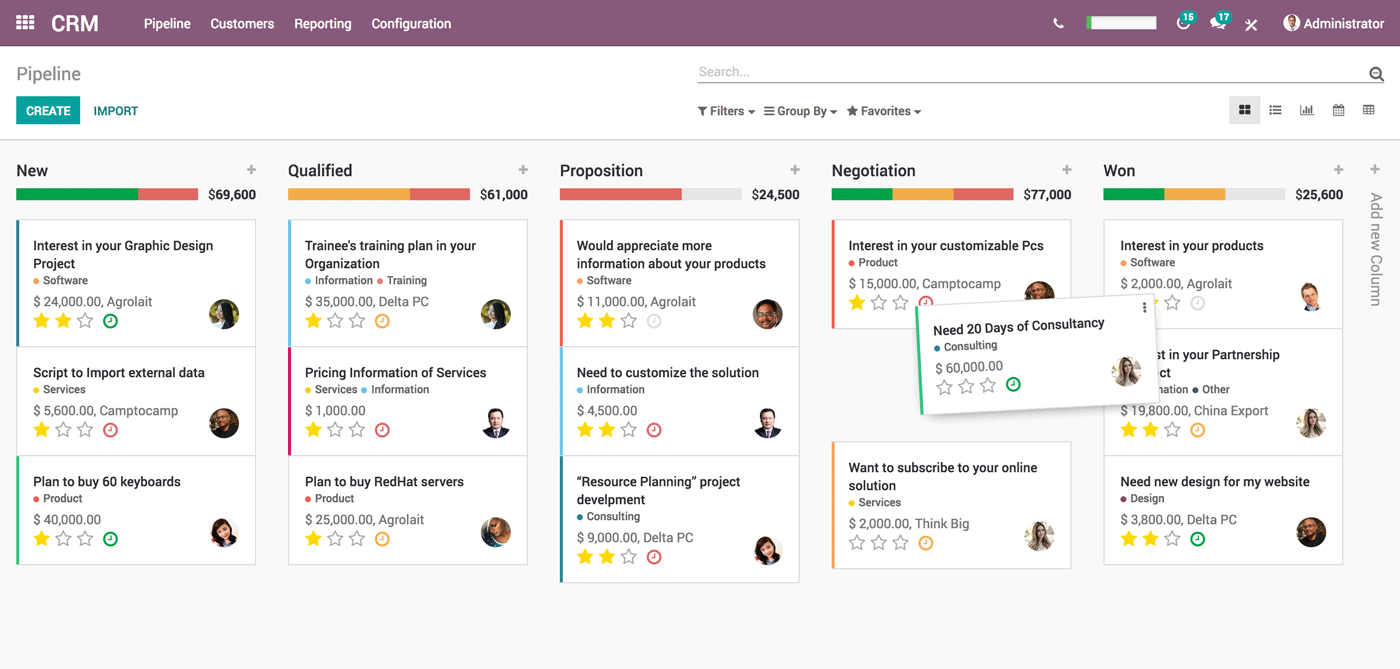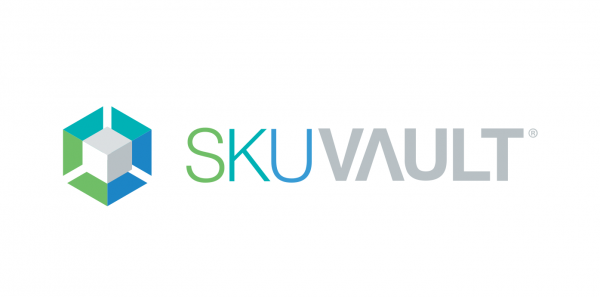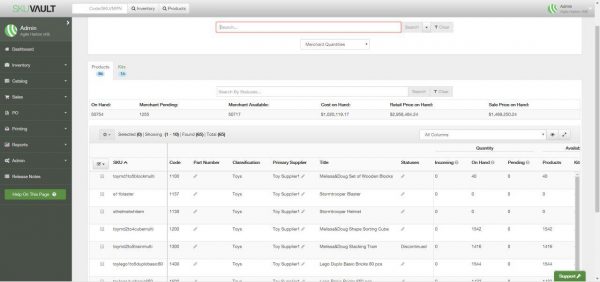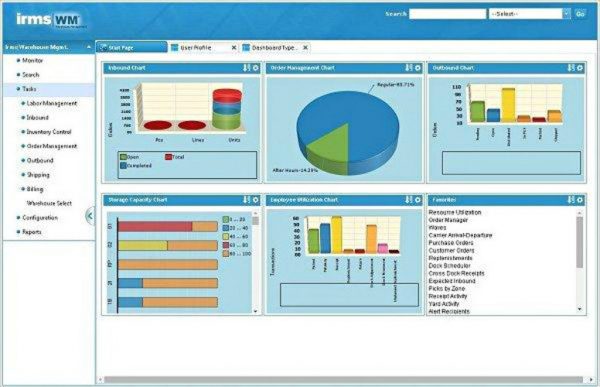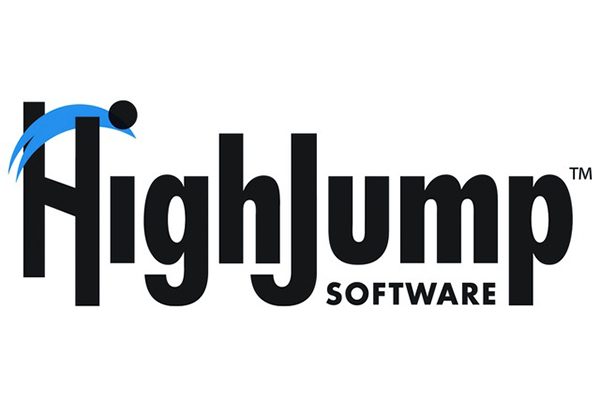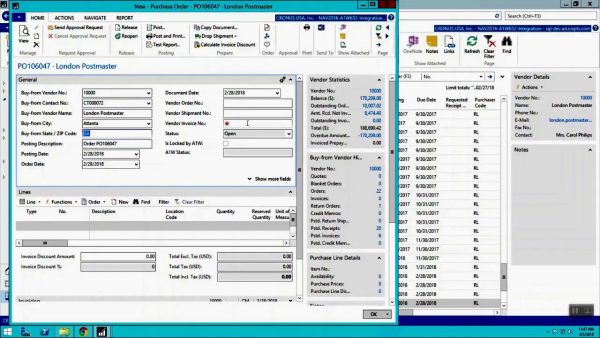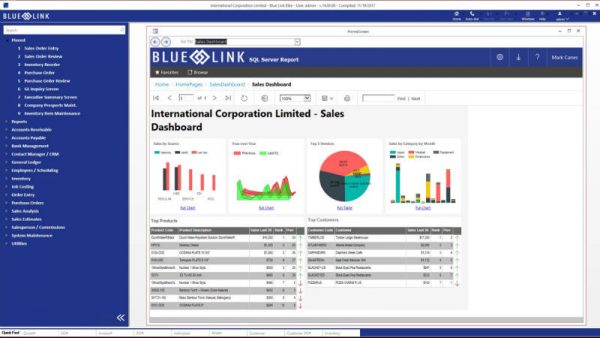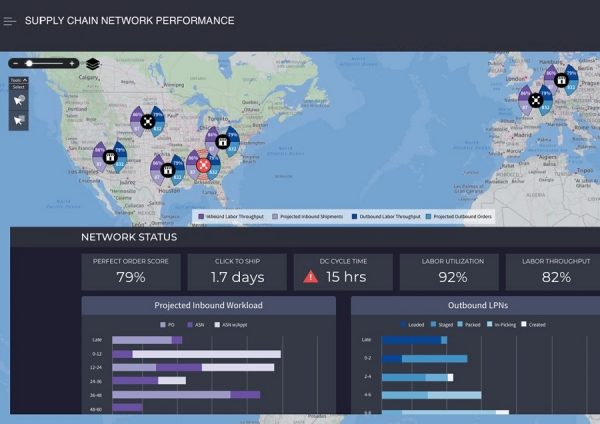The best warehouse inventory management software will help you handle typical challenges, like the accuracy of your inventory tracking. Plus, they can speed up redundant processes and have you better manage your time to focus on more pressing tasks. With the importance of such a system, we’ve done the legwork for you — we’ve tried and reviewed the market’s leading options to help you find one best suited for your business.
The cream of the crop is undoubtedly the popular NetSuite — it has a host of must-have features for an all-in-one warehouse management powerhouse, and it’s a go-to solution for both B2B and B2C eCommerce businesses. Find out more below and learn how NetSuite compares to big names like Mobi3 and Sphere.
Our Pick For Best Warehouse Management Software: NetSuite
- The best warehouse management solution should combine many key features in a single tool. NetSuite combines cash flow, financial, inventory, payroll, and much more so users can have complete control over their business.
- NetSuite also boasts a suite of innovative tools to manage both B2B and B2C eCommerce applications with ease for the ultimate convenience.
- Easy deployment, scalability, and effortless upgrades are all key features of any high-quality warehouse management software solution, and NetSuite offers all of this and more in one affordable package.
The Best Warehouse Inventory Management Software Solutions
We’re confident that our shortlisted top 10 inventory management tools will have what you’re looking for, regardless of your specific needs and budget:
- NetSuite — Overall, the Best Solution for Combined Inventory Management and eCommerce Applications.
- Mobe3 WMS — The Best Software for Optimizing Routes and Warehouse Layouts.
- Sphere WMS — An Impressive Tool to Track Warehouse Inventory Levels.
- Infoplus — The Best Software for Customized Report Dashboards.
- Odoo — A One-Stop-Shop Solution for Your Sales and Warehouse Applications.
- SkuVault — Popular Software for Seamless Integration with Third-Party Solutions.
- IRMS360 — The Best System for Tracking Supply Chains and Inventory Control.
- HighJump — Leading Solution for Automating Your Warehouses and Boosting Productivity.
- Blue Link ERP — Popular Option for SMEs.
- Manhattan — The Best Solution for Advanced Management of Supplies Through AI and Machine Learning.
Find Your Ideal Warehouse Inventory Management System – Read Our Reviews
1. NetSuite — Overall, the Best Solution for Combined Inventory Management and eCommerce Applications
As a cloud-based warehouse management system, NetSuite combines a host of features in one easy-to-use solution. Its suite of innovative tools combines cash flow, financial, inventory, payroll, and much more into a single tool, giving users full control over their business.
SuiteCommerce is part of this suite of tools, representing a single solution that supports both B2B and B2C eCommerce for complete convenience. From features that allow multiple-channel order management to those that allow for inventory visibility in real-time, NetSuite offers a holistic approach to eCommerce management.
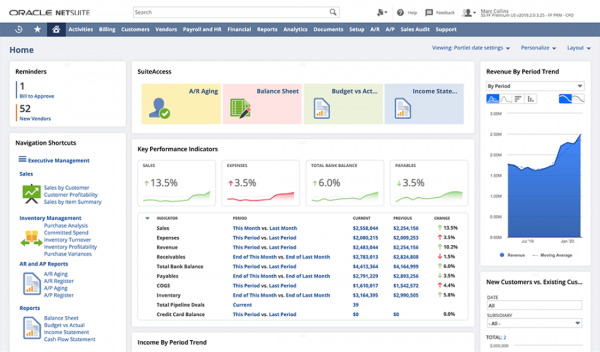
NetSuite users can even create their own landing pages, publish fresh content, and launch promotions, while user-friendly drag-and-drop tools enable content to be managed and pages to be edited quickly and effortlessly.
As an added bonus, NetSuite is also highly scalable, allowing for extensibility alongside effortless upgrades and simple deployment. With automatic updates and new features appearing with each release, your site will always stay up to date with the most cutting-edge technology.
Pros:
- A single solution for inventory management, order management, and eCommerce marketing.
- Order management and processing for several channels.
- Both B2C and B2B eCommerce are supported on a single platform.
- Excellent scalability to suit the needs of your business.
- User-friendly drag-and-drop tools for the ultimate convenience.
Cons:
- A lack of third-party out-of-the-box integrations.
| Software | Our score | Pricing |
| NetSuite | ⭐⭐⭐⭐⭐ | $499 per user per month |
2. Mobe3 WMS — The Best Software for Optimizing Routes and Warehouse Layouts
Structuring the layout of your warehouse and amplifying direct picking routes is a breeze with Mobe3 WMS. With its SmartBarcode scanning, manual errors are eliminated, and the efficiency and productivity of your warehouse workers are boosted.
Mobe3 WMS software is simple to implement as well as speedy to get to grips with. With its user-friendly, easily navigable interface, it’s a highly usable solution.
Configurable and flexible, this tool integrates effortlessly with ERPs and other systems, such as MES, TMS, and weight scales. This makes it a convenient option for use in any distribution centre.
Helping you to maintain inventory accuracy at all times, Mobe3 WMS is a cost-effective logistics solution.
Pros:
- Effortless integration with systems like MES, TMS, and weight scales, as well as ERPs.
- Flexible and easily configurable.
- A user-friendly, easily navigable interface.
- Its ability to scan barcodes eliminates the possibility of manual errors.
Cons:
- May not always be compatible with older devices or previous iOS mobile device versions.
| Software | Our score | Pricing |
| Mobe3 WMS | ⭐⭐⭐⭐ | $300 per user per month |
3. Sphere WMS — An Impressive Tool to Track Warehouse Inventory Levels
If you are looking for an easy way to gain better visibility, efficiency, and control over your warehouse floor operations, Sphere WMS is a great choice. It offers every feature you could need to boost your business’s productivity thanks to real-time reports and web visibility, wireless scanning of barcodes, an iOS application, and flexible customization.
Sphere WMS also scores well in terms of integrations. Many 3rd-party connector options are available, including online shopping carts and popular eCommerce sites like Amazon, Etsy, PayPal, and WooCommerce, among others.
Prices for Sphere WMS are flexible, so you can find options that best meet your needs. There is also a free demonstration available so you can determine if it’s the right choice of software for you before you buy.
Although Sphere WMS is one of the more complex warehouse management tools, its advanced features make this a highly detailed system for in-depth real-time inventory control.
Pros
Cons
| Software | Our score | Pricing |
| Sphere WMS | ⭐⭐⭐⭐ | Flexible |
4. Infoplus — The Best Software for Customized Report Dashboards
When you need a full WMS equipped with purchasing and inbound, shipping management and outbound, building blocks, inventory control, customized reports, dashboards, stock control, customer portals, and shipment tracking in real-time, Infoplus is the one for you.
Infoplus is an efficient and versatile software solution that offers integrations with more than 120 carriers, carts, and more, including big names like Walmart Marketplace, Etsy, and Amazon Seller Central. With its impressive array of features, it offers excellent value for money.
One of the best features of Infoplus is its flexible price plans. If you’re running a small business or a new start-up, it offers low-cost options that are highly affordable.
Infoplus’s pricing scheme is also very transparent so you can easily make a well-informed purchasing decision.
Pros:
- Excellent customization for report dashboards.
- Over 120 integration options with popular carts and carriers.
- A free demo version is available.
- Transparent price plans with flexible options for SMEs.
Cons:
- A lack of efficient statistics and reporting tools.
| Software | Our score | Pricing |
| Infoplus | ⭐⭐⭐⭐ | $379 per month |
5. Odoo — A One-Stop-Shop Solution for Your Sales and Warehouse Applications
If you’re running a business on a budget, you’ll be hard-pressed to find a more affordable and budget-conscious option for warehouse inventory management than Odoo.
This software allows one app to be used completely free of charge, and adding on a second app only costs a modest sum. As a result, this system offers great value for money.
This series of sales and warehouse solutions cover everything from productivity tools and operations to sales and websites. The software utilizes automated RFQs and order points so the supply chain can be automatically replenished effortlessly.
Odoo offers its own full suite of 1st party apps and software to make life easy and convenient for users. However, for those who wish, it’s possible to connect third-party integrations via Zapier.
Pros
Cons
| Software | Our score | Pricing |
| Odoo | ⭐⭐⭐⭐ | $24 per month |
6. SkuVault — Popular Software for Seamless Integration with Third-Party Solutions
This inventory management software is cloud-based and is designed specifically for multi-channel and eCommerce merchants. Dealing with physical and actual inventory as it is scanned in and out of the store or warehouse, SkuVault uses real-time data in order to sync with online marketplaces like eBay, Amazon, Shopify, and Magento.
As SkuVault syncs with quantities in real-time, this helps to ensure that you prevent running out of stock and reduce the risk of shipping, picking, and packing errors. Meanwhile, the smart reordering reports ensure purchasing decisions can be backed up by actual data.
SkuVault can increase efficiency while improving your business’s bottom line. Evidence shows that users can decrease out of stocks by as much as ten times, labour costs can be reduced by up to 30%, and fulfilment times can be slashed by as much as 87%.
Even better, SkuVault especially excels in the field of integrations. Options for integration include big-name eCommerce brands like eBay, Amazon, Etsy, Magento, and Shopify, among others.
Pros
Cons
| Software | Our score | Pricing |
| SkuVault | ⭐⭐⭐⭐ | $199 per month |
7. IRMS360 — The Best System for Tracking Supply Chains and Inventory Control
Whether you’re running a global corporation or a single small-scale distribution center, IRMS360 is the ideal cloud-based warehouse management system for your needs.
Providing impressive control and visibility of all your operations, IRMS360 enables you to maximize your available space and resources, aiding with fulfilment. This software offers a full 360-degree viewpoint over the supply chain with performance dashboards, providing visibility in real-time of products, processes, and people as they move through your warehouse floor.
It’s available on all devices, including Windows, Android, and iOS systems. IRMS360 integrates seamlessly with a number of MRP, CRM, ERP, and accounting systems. Meanwhile, its extended functionality offers 3rd-party billing, yard and transportation management, demand planning, and labour management.
Whether you are operating in the healthcare, food and drink, wholesale distribution, automotive, metals, publishing, or 3PL warehouse sector, IRMS360 will simplify your processes and improve the service you provide for your customers.
Pros
Cons
| Software | Our score | Pricing |
| IRMS360 | ⭐⭐⭐⭐ | On request |
8. HighJump — Leading Solution for Automating Your Warehouses and Boosting Productivity
If you need an agile WMS solution to make your supply chain even more dynamic, HighJump could be the optimal warehouse inventory management software for you.
Designed to boost productivity while reducing operational costs, HighJump uses cutting-edge technology to reduce order turnaround windows while maximizing capacity and throughout. This robust program affords numerous capabilities to enable advanced users to really harness the full potential of this system.
With its intuitive, modern user interface, HighJump is a great solution to automate your warehouses while increasing productivity exponentially.
Thanks to its ability to integrate seamlessly with major ERP publishers, HighJump gives you impressive functionality and versatility. Even better, HighJump can also provide customized integration for custom-built and legacy ERP systems for greater convenience and compatibility.
Pros
Cons
| Software | Our score | Pricing |
| HighJump | ⭐⭐⭐⭐ | On request |
9. Blue Link ERP — Popular Option for SMEs
If you’re running a small or medium-sized distribution or wholesale enterprise, Blue Link ERP is the ideal all-in-one solution for you.
Thanks to its fully integrated system, it provides complete user-friendly functionality that allows you to effortlessly manage accounting, inventory, order processing, and entry, as well as warehouse management. With its easily navigable interface, Blue Link ERP offers simple access and excellent readability.
An excellent feature that Blue Link ERP can offer is its ability to integrate with barcode scanners, tablets, and common carriers. As an added advantage, this software boasts a free demonstration so you can determine whether it’s the right choice for you before purchasing.
Finally, Blue Link ERP excels in its onboarding process since it provides training, support, implementation, and in-person consulting all delivered by its in-house expert team.
Pros
Cons
| Software | Our score | Pricing |
| Blue Link ERP | ⭐⭐⭐⭐ | On request |
10. Manhattan — The Best Solution for Advanced Management of Supplies Through AI and Machine learning.
If you’re looking for one of the most advanced supply management solutions on the market today, Manhattan may be the right choice for you.
Harnessing the power of machine learning and the latest AI innovations, Manhattan represents an effective system to manage your warehouse inventory. Designed to optimize throughput and fulfilment for both WAVELESS and WAVE orders on just one platform, Manhattan is a streamlined and efficient piece of software.
When you need to streamline shipping and receiving in order to expedite your back-ordered products and facilitate cross-docking, Manhattan can offer you that functionality. Meanwhile, its user environment is simple to get to grips with.
One further advantage is Manhattan’s dedicated WMS team, which writes scripting from the SQL server.
Pros
Cons
| Software | Our score | Pricing |
| Manhattan | ⭐⭐⭐⭐ | $1000 for a SaaS license, $2000 for on-premise |
Which Types Of Warehouse Management Software Are Right For You?
There are several types of warehouse management software, so how do you choose which one is right for you? There are many facets involved in warehouse management, from transportation and inventory management to managing the supply chain.
Yet, while dealing with all of these aspects can be challenging, warehouse management software provides a catch-all solution that resolves all your problems. However, it’s imperative to choose the correct solution for you.
Since all warehouse management systems have something different to offer, it’s important to be aware of their capabilities and features so that you can determine whether they meet your requirements.
With this in mind, here are some key features that you need to consider when choosing the best warehouse inventory management system for your business.
- Outbound and Inbound Inventory Flow Management. All warehousing processes involve the initial step of handling vehicles that bring in your inventory and take out your orders, aiding fulfillment. WMS solutions must-have tools to enable the entry of data into your inventory systems via RFID tagging and barcode scanning. You’re looking for functionality to allow you to follow a product as it goes through its whole life cycle.
- Smooth integration with CRM and ERP systems. When WMS software integrates seamlessly with CRM and ERP systems, you can exponentially speed up your data tracking in real-time across your organizational departments. It allows you to ensure all information relating to stock, inventory, and orders can be stored in one location, giving all departments easy access to the most recent data.
- Real-time analysis and tracking. Any warehousing business that can track and analyze its warehouse operations in real-time can gain valuable insights that make a vital difference to inventory maintenance. Workflow management tools, data filtration functionality, and multi-location tracking all add up to easier management of multi-warehouse operations.
- Cloud-Based Deployment. These days, remote working is more popular than ever, and this means that on-premises warehouse management software isn’t always a viable choice. Since employees require data access when on the move, cloud-based deployment is vital, along with the ability to use the system through mobile devices.
- Secure backups. Cyber-attacks along with natural disasters can lead to disruption for your warehouse operations. In the event of such a calamity, your WMS must be capable of taking backups automatically of your warehouse data. This will keep your data safe without compromising the visibility of your warehouse operations.
What Is Warehouse Management Software?
Warehouse management systems are digital tools that have been designed to control, optimize, and support the warehouse workflow. Usually, the processes include everything from inventory accuracy and management, shipping, picking, auditing, fulfillment, and a lot more.
Warehouse management systems have become so popular in recent years that the industry is set to be worth $6.1 billion by 2026, and the trend is still growing year on year.
Recent research has shown that 62% of companies lack visibility in their supply chain, so perhaps you are running one of those organizations that already have warehouse management solutions in place, but they simply aren’t getting the job done to a high enough standard for your needs? Or perhaps you’re ready to implement your first system to streamline your warehouse processes. Either way, you’ll find the information you’re seeking right here.
Inventory Management vs Warehouse Management
Inventory management and warehouse management modules may often be found combined in the same software package, but they may also be purchased as standalone options.
Although inventory management and warehouse management may seem to be the same thing, there are some key differences. Warehouse management involves handling inventory, along with other related tasks in your warehouse. Meanwhile, inventory management involves dealing with stock management for the entire business, as well as forecasting the most up-to-date business trends.
Both warehouse management and inventory management help in the movement of inventory to the end consumer from the supplier in an effective and efficient manner. Both also involve the storage, shipping, and reordering of stock, and both provide greater visibility into stock, using RFID, barcode tools, and software to improve accuracy and efficiency.
Benefits Of Warehouse Management System
There are many benefits that come with using warehouse management software, including lower operational expenses and reduced labor costs, improved tracking of inventory, fast replenish and low stock warehousing inventory capabilities, better security practices, improved billing management, inbound and outbound control, CRM, and a lot more.
A business’s success and profitability can dramatically be increased with the impletion of the right Warehouse Management Software.
A List Of Common Warehouse Management Features
Warehouse management software boasts a number of commonly seen features. These include:
- Inventory tracking data — the best WMS platforms track your inventory data using RFID tags and barcode readers and update that information within the dashboard so anybody with the correct permissions can access the most up-to-date information readily.
- Warehouse design — many warehouses are poorly designed. They waste a lot of space which can draw out the picking and packing process. The best WMS platforms will improve picking logic and customize workflow, making the warehouse better designed for optimal inventory allocation.
- Packing and picking — wave picking, batch picking, and zone picking are all optimized effectively if you use a WMS. Warehouse workers can become more productive thanks to the greater efficiency WMS software lends to their processes.
- Receiving and put-away — Some WMS systems offer this technology to speed up retrieval and put-away of inventory through PTV (pick to voice) or PTL (pick to light) technology.
- Shipping — WMS platforms send B/L (bills of lading) ahead of each shipment, generating invoices and packing lists, and sending advance notifications of shipments to recipients.
- Labour management — good WMS platforms can monitor the performance of warehouse workers through the use of KPIs (key performance indicators) to indicate which employees are performing below or above the standard.
- Dock and yard management — if you’re running a large-scale operation, a WMS platform can help truck drivers that come into your warehouse by guiding them effectively to the correct loading dock.
- Reporting — a well-designed WMS platform can generate reports automatically to help managers to analyze how well their warehouse employees and operations are performing in order to anticipate possible issues in advance and pinpoint areas where improvements can be made.
Business Sizes Using Warehouse Management Software
Businesses of all types and sizes within the distribution center and warehousing sector can benefit from using warehouse management software. The key to success lies in choosing the right type of software to suit your company type.
Different types of software are suited to different sizes of businesses. Therefore, you need to do your research well and select a system that is designed to work best with your requirements, whether you are running a small, medium-sized, or large-scale company.
Competitive Advantages Of Using Warehouse Management Software
If your business adopts warehouse management software, it can reap a number of competitive advantages over its rivals. For example:
- Greater agility — an agile WMS solution gives you the opportunity to take greater control over your warehousing operations in order to make speedier improvements.
- More clarity — WMS solutions automate your warehouse’s manual processes, thus enabling management visibility while facilitating easier decision making in all of your warehouse functions.
- Improved flexibility — a well-designed WMS can provide excellent flexibility so the system can be tailored to your business’s unique needs. This improves your accuracy, efficiency, and profitability.
Relevant Warehouse Management Software Trends
Some of the most up-to-date warehouse management software trends for this year include:
- A move towards cloud computing. The manufacturing sector has seen huge changes come about due to cloud computing, especially in terms of warehouse management. The adoption of cloud services enables retailers, small-scale manufacturers, and those running eCommerce businesses to streamline warehouse operations while driving significant financial savings. Cloud-based solutions also eliminate any need to maintain a complex software/hardware infrastructure to reduce overhead costs considerably.
- Adoption of the IoT. The Internet Of Things has begun to gain a lot of traction around the world, and it is becoming more accepted in the mainstream year on year. Connected devices are becoming increasingly visible in daily life and the manufacturing sector represents a huge percentage of the world’s IoT spend. RFID is one of the most important examples of the use of the internet of things in the field of warehouse management, and investment in this technology is set to increase by as much as 11.3%.
- 4PL and 3PL Logistics. Third-party logistics have already seen tremendous growth in the supply chain and manufacturing industries. Small companies are now beginning to adopt this technology, and 4PL logistics are gaining more traction globally, with more companies investing in the automation of their whole supply chain.
The Cost Of Warehouse Management Software
There is no single price tag for warehouse management software. The cost very much depends on which software you choose, the size of your business, the features you require, and a number of other considerations.
While there are some free options, in most cases, to get the functionality you require to make a significant difference to your warehousing operation, you’ll need to pay a fee.
Some companies providing WMS solutions offer monthly pricing plans at varying prices, depending on scalability. Others offer one-off or annual fee structures. You can expect to pay several hundred dollars per user per month for a high-quality system.
Important Questions To Ask Vendors When Evaluating Warehouse Management Software
Some key questions that you should be asking vendors when you’re evaluating any kind of warehouse management software include:
- What functions does your software offer that can benefit my industry? Selecting the best warehouse management software can be challenging, but if you need industry-specific functionality, you need to ask about the software’s capabilities and features that can meet your requirements.
- How can you provide ongoing value and innovation? Nobody wants to invest in warehouse management software, only to find that it is outdated very rapidly and requires replacement. It’s important to ask the software company how they can guarantee their software will remain useful and functional in the future. How will they maintain compliance and provide updates as the months and years go on?
- Is your software a suitable fit for my business? Any software vendor should recognize if your requirements are beyond what they’re able to deliver. Make sure you analyze your own business processes before meeting with vendors to check on the features you require so you can determine whether what they can offer is suitable.
- Can you offer any other services beyond functionality? Finding out whether a vendor can offer you services beyond the functionality of the software itself can make all the difference to your purchasing decision. Services like data migration, training, customization, and provision of technical support can all be significant offerings that can sway your final choice.
What Are Some Lessons Learned From Implementing Warehouse Management Systems?
Implementing warehouse management systems can be a process fraught with potential pitfalls, so it’s important to learn some lessons from companies that have already jumped through those hoops. Here are some that you should take on board:
- Involvement of all stakeholders in your project. Gathering feedback from the sales staff, the supplier chain, and customers will enable you to ensure your business goals are in alignment with the stakeholders’ requirements, allowing you to select the most appropriate WMS to deliver on those requirements and to improve profitability, customer service, and productivity.
- Open communication. Timely, frequent, and clear communication ensures the onboarding process will run smoothly. Good communication is key to flagging any possible problems at an early stage so they can be rectified rapidly.
- Creating a strong change management plan. It can be challenging to implement a new warehouse management solution, and a strong change management plan is required to support the process. Without one, staff can lose motivation, which can cause delays.
- Staying flexible. Having backup plans is important just in case an emergency arises during the transition to the new WMS solution.
- Having realistic deadlines and plans. Allocating sufficient time for every task is important to the success of the implementation process. You need to be realistic in terms of sales impact, costs, and time requirements to avoid a negative impact on your business’s bottom line.
Conclusion: What is the Best Warehouse Inventory Management Software in 2025?
As you can see, implementing high-quality warehouse inventory management software is crucial if you want your distribution or warehousing business to be successful and competitive. However, it’s imperative to choose the correct software solution to suit your business’s needs. These are your top options:
- NetSuite — Overall, the Best Solution for Combined Inventory Management and eCommerce Applications.
- Mobe3 WMS — The Best Software for Optimizing Routes and Warehouse Layouts.
- Sphere WMS — An Impressive Tool to Track Warehouse Inventory Levels.
- Infoplus — The Best Software for Customized Report Dashboards.
- Odoo — A One-Stop-Shop Solution for Your Sales and Warehouse Applications.
- SkuVault — Popular Software for Seamless Integration with Third-Party Solutions.
- IRMS360 — The Best System for Tracking Supply Chains and Inventory Control.
- HighJump — Leading Solution for Automating Your Warehouses and Boosting Productivity.
- Blue Link ERP — Popular Option for SMEs.
- Manhattan — The Best Solution for Advanced Management of Supplies Through AI and Machine Learning.
We’ve analyzed all the options, and we’re confident that NetSuite is the best WMS option for your company. As a single solution that meets all your needs, this software is efficient, effective, and convenient, making it the perfect choice for any business.
Frequently Asked Questions About Warehouse Inventory Management Software
What Can Warehouse Management Systems Offer?
What Is Warehouse Management Software?
What Is Warehouse Management?
What Are The 6 Areas Covered By The WMS?
How Many Types Of WMS Are There?
What Is The Best Warehouse Management Software?
Sources:
- Markets and Markets – Warehouse Management System Market Report
- Finances Online – Supply Chain Statistics
- 3PL Central – 3PLs vs 4PLs vs 5PLs: What’s the Difference?
